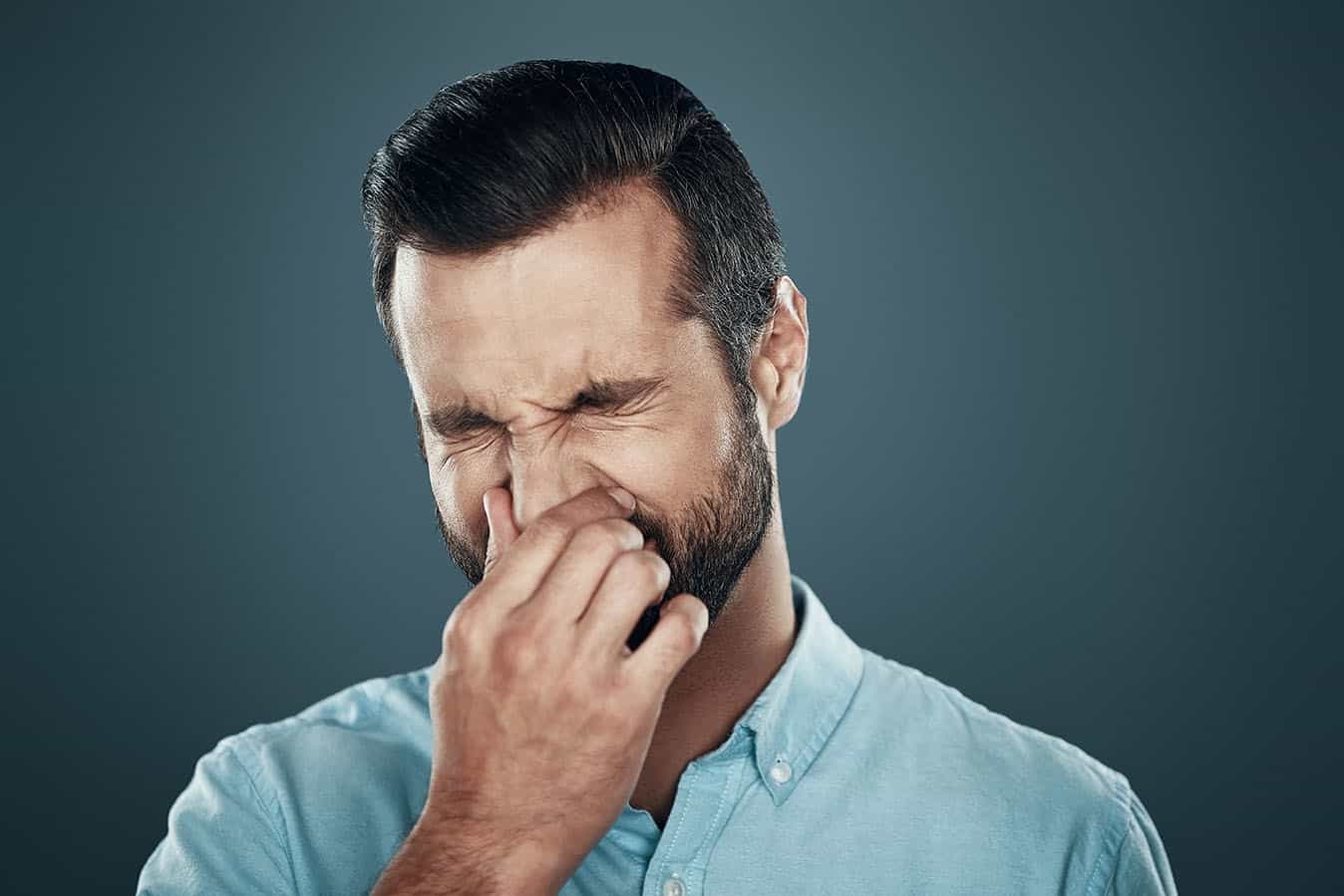Can holding in a sneeze be harmful? The short answer to this seemingly absurd question is, unfortunately (and surprisingly), yes.
This paper outlines my recent misadventure with not sneezing and summarises some key findings from the medical literature that highlights that while very rare, holding in a sneeze can be bad for your health.
Sneezing is a very common physiological response, often to irritants in the nose or throat. Irritants can include dust, chemicals, allergens, or mucus that has been produced due to infection by a common cold, influenza, or even SARS-CoV-2.
With many community members now very aware of the need to carefully cover sneezes and coughs and use facemasks or personal protective equipment (PPE) to help prevent the potential transmission of infection to others, it’s likely that many of us have also attempted to ‘hold in’ a sneeze despite the often-blissful release a good sneezing session might afford.1
Sneezing in PPE has been investigated lately and findings indicate that a sneeze in a surgical mask, respirator, and especially a face shield can both escape and contaminate surfaces, including the PPE itself.2,3
While I don’t work in the clinical area and don’t use PPE, I’ve successfully held in many sneezes in my time. Sometimes failure might result in an embarrassing high-pitched squeak or a mortifyingly soggy sounding grunt.
What I’ve only now realised, however, is that you can definitely fail epically (and harmfully) to hold in a sneeze. My failed attempt resulted in an immediate and painful ‘tearing’ sensation in the back of my throat followed by painful (odynophagia), difficult swallowing (dysphagia).
I took a couple of Ibuprofen when the pain got progressively more irritating and within several hours, I noticed my voice becoming hoarse and squeaky (dysphonia). Thankfully, my ability to swallow food and drink did not seem much affected. The pain had largely diminished the following day, but the dysphonia had become significantly worse. I could only manage a Voldemort-like whisper or an erratic croak/squeak/Darth Vaderesque low voice reminiscent of early adolescence. This resolved after about 48 hours.
A comprehensive review in 2019 found 52 unique reports of sneeze-related injuries. Most injuries occur when a ‘closed-airway’ has impeded the 1 kPA burst of air from the nose or mouth.4
Closing the airway (or ‘holding in the sneeze’) can increase airway pressure by over 20 times and result in harm. Injuries can occur across several domains, including; intrathoracic injury (inside the ribcage between the top and bottom of the lungs) that appears to account for 25% of injuries, pharyngeal (the throat behind the mouth and nasal cavity), ocular/orbital (the eyes/cavity around the eyes), intracranial/neurological (inside the skull/nervous system), otologic (middle-ear and eardrum), and laryngeal (the voice box – which is also involved in breathing and preventing aspiration of food).4
It is in this final domain where my injury appears to be placed. The same review also noted that most people who injure themselves from sneezing are men with a mean age of 40 with no known risk factors. This makes me a pretty typical victim of this preposterous event.
A 2020 case study of a 34-year-old man diagnosed with thyroid cartilage fracture also reported that perusal of the medical literature uncovered only six reports of laryngeal injury after sneezing.5
Despite no sign of external trauma, physical examination revealed right vocal cord and band oedema and hematoma with subcutaneous emphysema. On day seven, the patient’s clinical symptoms had resolved and examination appeared normal. He received antibiotics and corticosteroid therapy for two weeks and was advised to observe ‘absolute voice rest’. In my case, seven days on, my voice is still a little bit hoarse on some notes, but the pain has resolved completely.
Unfortunately, letting a sneeze ‘run free’ isn’t a panacea to avoid harm. In 2021, a systematic review identified 15 cases of non-traumatic laryngeal fractures and highlighted that all had occurred after an episode of severe coughing or sneezing – so not necessarily holding in a sneeze.6 While I don’t know if I’ve actually suffered a fracture, the symptoms do seem similar from my experience, so I’ll certainly be monitoring myself carefully.
It’s now a week since I abjectly failed to hold in a sneeze successfully and I’m feeling fortunate that I appear to have escaped some of the more serious adverse consequences of closed-airway sneezing. Other injuries that have been reported include; lung hernia, diaphragmatic tear, pneumothorax, rib fracture, aortic dissection, myocardial infarction, pneumocephalus, cerebral spinal fluid leak, orbital blow-out fracture, and hearing loss.4
The lesson here is this; while covering sneezes using respiratory etiquette should be recommended,7 (eg. with a crooked elbow) to not release potentially infectious expired particles and aerosols unimpeded into the environment, attempting a ‘closed airway’ sneeze should be avoided. While it’s not entirely clear how risky sneezing into PPE is in terms of infection risk, it does appear that contamination and aerosol escape can occur, which highlights the need to ensure that staff using PPE have ready access to replacement items if one becomes compromised.
References
-
Songu M, Cingi C. Sneeze reflex: facts and fiction. Ther Adv Respir Dis 2009; 3(3): 131-41.
-
Arumuru V, Pasa J, Samantaray SS. Experimental visualization of sneezing and efficacy of face masks and shields. Physics of Fluids 2020; 32(11): 115129.
-
Li R, Zhang M, Wu Y, et al. What We Are Learning from COVID-19 for Respiratory Protection: Contemporary and Emerging Issues. Polymers (Basel) 2021; 13(23): 4165.
-
Setzen S, Platt M. The Dangers of Sneezing: A Review of Injuries. Am J Rhinol Allergy 2019; 33(3): 331-7.
-
Ateş MS, Turhal G, Aysel A, Durusoy D, Öztürk K. A Case with Thyroid Cartilage Fracture after Sneezing. Turk Arch Otorhinolaryngol 2020; 58(3): 197-9.
-
Khalid N, Bilal M, Umer M. Non-Traumatic Laryngeal Fractures: A Systematic Review. Turk Arch Otorhinolaryngol 2021; 59(1): 65-75.
-
Zhen J, Chan C, Schoonees A, Apatu E, Thabane L, Young T. Transmission of respiratory viruses when using public ground transport: A rapid review to inform public health recommendations during the COVID-19 pandemic. S Afr Med J 2020; 110(6): 478-83.
Author:
Micah DJ Peters PhD works at the the National Policy Research Unit (Federal Office), Australian Nursing and Midwifery Federation (ANMF) and the University of South Australia, Clinical and Health Sciences, Rosemary Bryant AO Research Centre








